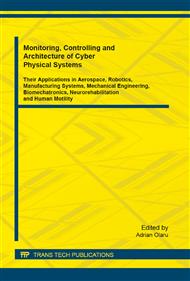p.232
p.242
p.252
p.262
p.270
p.280
p.288
p.298
p.305
Theoretical Contributions to the Accuracy of Parts by Moulding and Injection Moulding
Abstract:
The purpose of this study is to analyse, by simulation, the injection of ABS plastic parts and track results on piece deformations after the latter was removed from the mould. Injection Process. Analysis was performed using the Autodesk Moldflow professional package. The results of the theoretical analysis by numerical methods are used for optimal design of the die to reduce and eliminate the strains and defect parts.
Info:
Periodical:
Pages:
270-279
Citation:
Online since:
October 2014
Authors:
Keywords:
Price:
Сopyright:
© 2014 Trans Tech Publications Ltd. All Rights Reserved
Share:
Citation:


